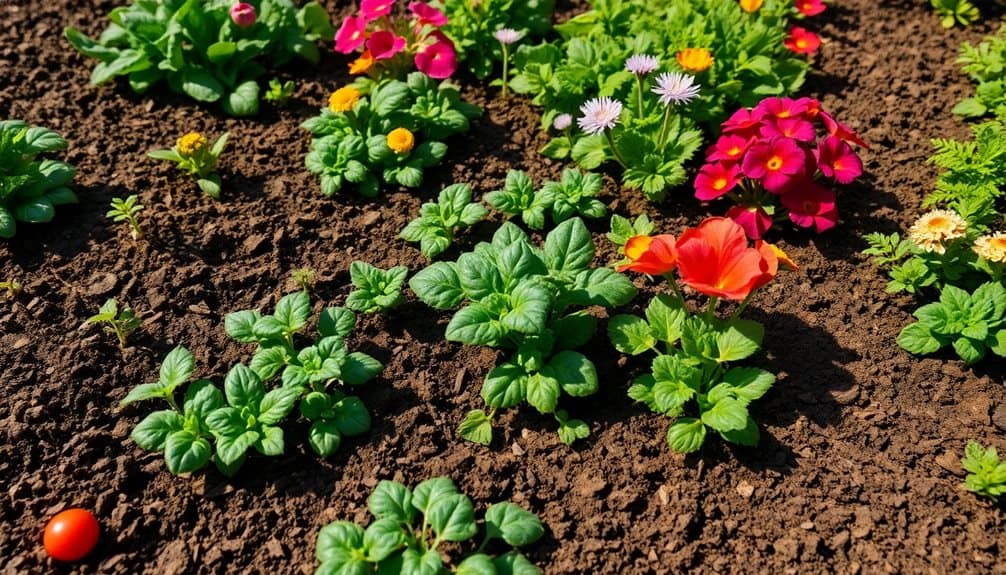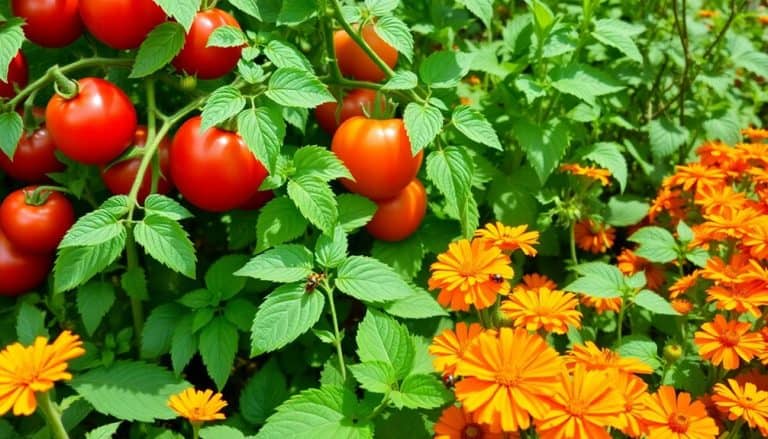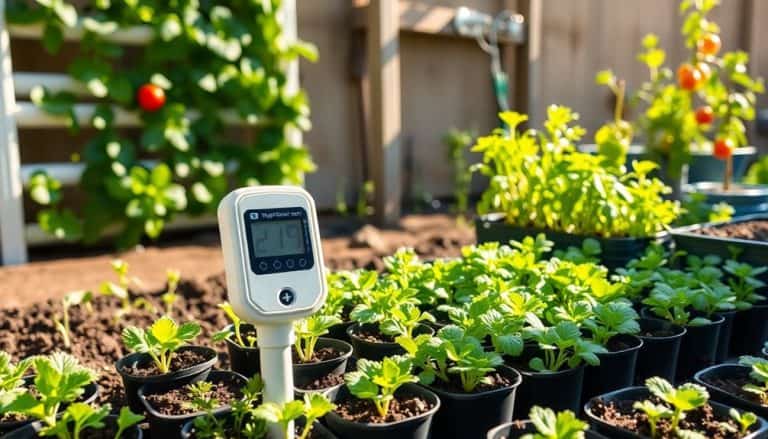This website contains affiliate links. Some products are gifted by the brand to test. As an Amazon Associate, I earn from qualifying purchases. The content on this website was created with the help of AI.
Your 2024 seasonal planting guide should adapt to evolving climate patterns while maintaining traditional zone-based timing. You’ll need to start cool-season crops 2-3 weeks earlier than historical schedules, utilizing succession planting techniques for consistent yields. Monitor your microclimate conditions with digital sensors and adjust your growing calendar accordingly. Plan indoor seed starting 6-8 weeks before your zone’s last frost date, and implement a four-zone rotation system for ideal soil health. Track pH levels and moisture content throughout the growing cycle. The complete month-by-month breakdown reveals essential timing adjustments for maximizing your garden’s productivity in changing conditions.
Key Takeaways
- Start warm-season crops indoors 6-8 weeks before last frost date while maintaining detailed records in your garden journal.
- Rotate crops through four distinct zones during growing seasons to optimize soil nutrients and prevent disease buildup.
- Implement succession planting schedules based on your hardiness zone to ensure continuous harvests throughout the growing season.
- Monitor microclimate conditions and adjust planting dates according to local frost patterns and temperature fluctuations.
- Plant cold-hardy varieties in late summer and utilize row covers to extend growing season into winter months.
Understanding Your Growing Zone
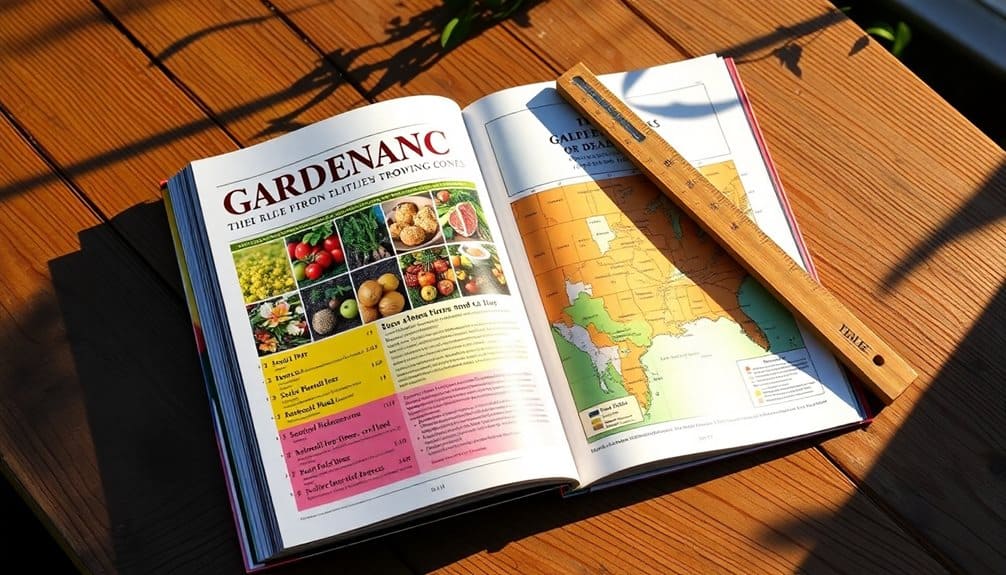
Anyone interested in successful gardening must first determine their USDA Plant Hardiness Zone, which is based on the average annual minimum winter temperature in their region. You’ll find your zone by consulting the USDA’s interactive map, which divides North America into 13 distinct zones, from Zone 1 (-60°F to -50°F) to Zone 13 (60°F to 70°F).
Your growing zone directly impacts plant survival rates and determines your ideal planting calendar. You’ll need to match each plant’s cold hardiness rating to your zone number – plants rated for your zone or lower will typically thrive in your garden. For example, if you’re in Zone 6, you can grow plants rated for Zones 1-6, but Zone 7 plants likely won’t survive your winters.
It’s essential to note that microclimate variations within your property can create conditions that differ from your official zone. Factors such as urban heat islands, elevation changes, wind exposure, and proximity to large bodies of water can create warmer or cooler spots. You’ll want to account for these variations when selecting planting locations and choosing cultivars for your garden.
Essential Gardening Tools and Equipment
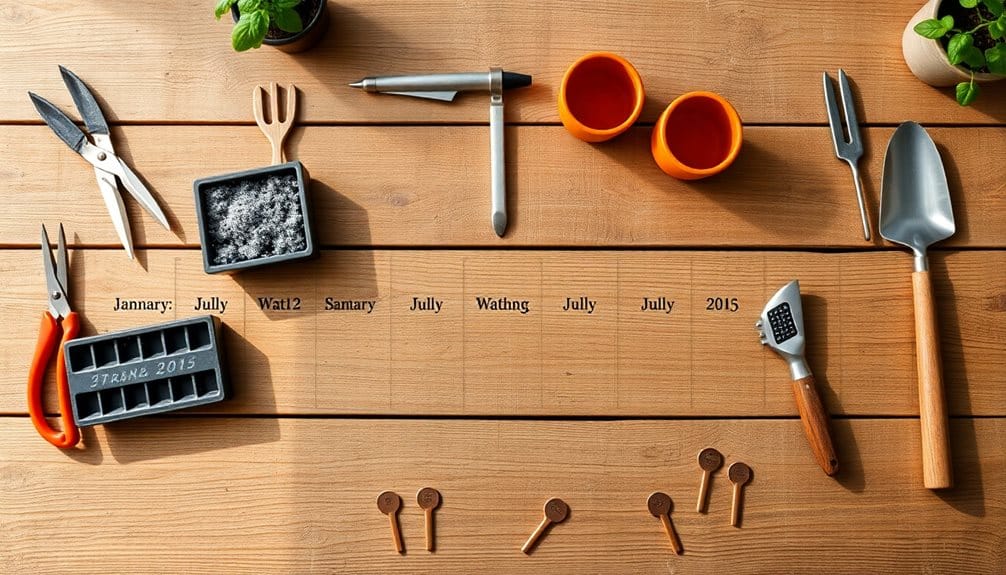
Equipping your garden workspace with proper tools is fundamental for efficient plant cultivation and maintenance. You’ll need high-carbon steel hand pruners for precise cuts, a sturdy spade with a sharp edge for digging, and an ergonomic trowel for transplanting seedlings. A steel garden fork proves essential for soil aeration and harvesting root crops.
For irrigation management, acquire a moisture meter, adjustable spray nozzle, and soaker hoses. pH testing equipment and soil thermometers enable precise monitoring of growing conditions. You’ll also require a wheelbarrow for transporting materials and heavy-duty garden gloves with nitrile coating for protection.
Essential maintenance tools include bypass loppers for branches up to 2 inches, a sharp hand saw for larger limbs, and a leaf rake with adjustable tines. Include marking stakes, plant labels, and indelible markers for accurate garden planning. For season extension, invest in row covers, frost blankets, and portable cold frames. Store your tools in a weatherproof shed or container, and maintain them with regular cleaning, sharpening, and occasional application of food-grade mineral oil to prevent rust. Choose leather work gloves with reinforced palms for enhanced grip and durability during heavy gardening tasks.
Early Spring Garden Planning
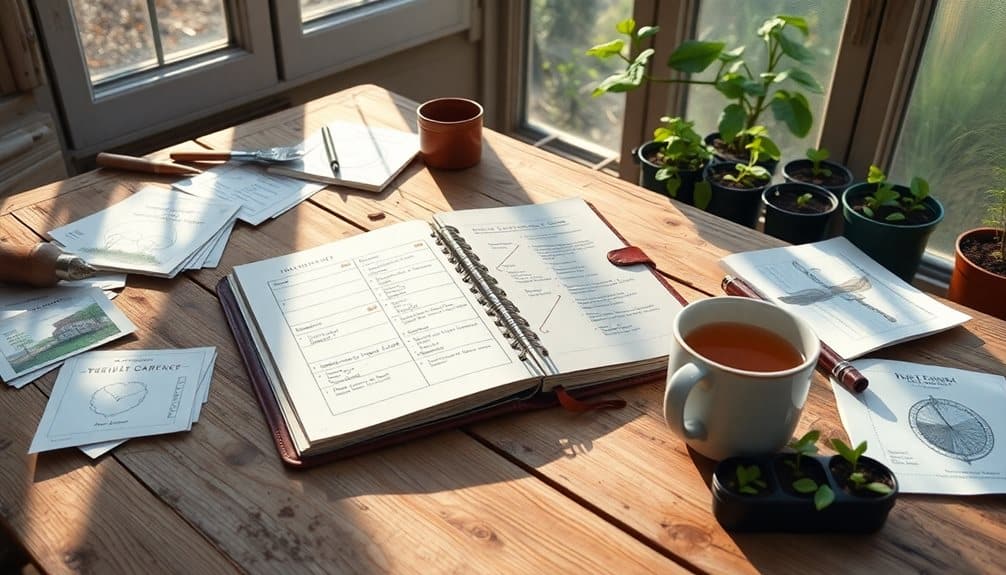
During early spring, successful garden planning hinges on conducting a thorough site analysis and soil assessment. You’ll need to evaluate your garden’s microclimate, measuring factors like sun exposure, wind patterns, and frost pockets. Test your soil’s pH levels and assess its composition, organic matter content, and drainage capabilities.
Map your garden’s layout using the square foot gardening method or traditional row planning. Factor in plant heights, spacing requirements, and companion planting strategies. You’ll want to take into account crop rotation from previous seasons to prevent soil depletion and disease buildup. Calculate your garden’s USDA hardiness zone and first/last frost dates to determine ideal planting windows.
Start seeds indoors 6-8 weeks before your last frost date for warm-season crops like tomatoes and peppers. Create a succession planting schedule for continuous harvests, and establish irrigation zones based on plant water requirements. Don’t forget to incorporate pollinator-friendly plants and beneficial insects into your design. Record all observations and plans in a garden journal, including soil test results, planting dates, and variety selections. This documentation will prove invaluable for future seasons. For optimal soil health monitoring, conduct soil nutrient testing at least twice during the growing season to track essential mineral levels and pH changes.
Summer Crop Rotation Strategies

Effective summer crop rotation demands strategic planning across your garden’s distinct growing zones. You’ll need to divide your garden into sections based on plant families, ensuring that heavy feeders like Solanaceae (tomatoes, peppers) don’t occupy the same soil where they grew the previous season. It is crucial to track nitrogen-fixing legumes and follow them with nitrogen-hungry brassicas.
Implement a four-zone rotation system where you’ll move each plant family clockwise annually. Zone 1 should shift from spring’s leafy greens to summer’s Solanaceae. Zone 2 transitions from brassicas to legumes, while Zone 3 converts from root vegetables to cucurbits. Zone 4 changes from legumes to alliums. This systematic approach helps prevent soil-borne diseases and optimizes nutrient utilization.
You’ll want to maintain detailed records of each zone’s crop history, pH levels, and soil amendments. When you’re transplanting summer seedlings, incorporate companion planting principles by positioning aromatic herbs strategically between crop rows. Consider vertical growing structures for vining plants to maximize space efficiency while maintaining proper air circulation within your rotation scheme. Before starting your rotation plan, test and enhance your soil with essential amendments to ensure optimal growing conditions for each plant family.
Fall and Winter Preparations
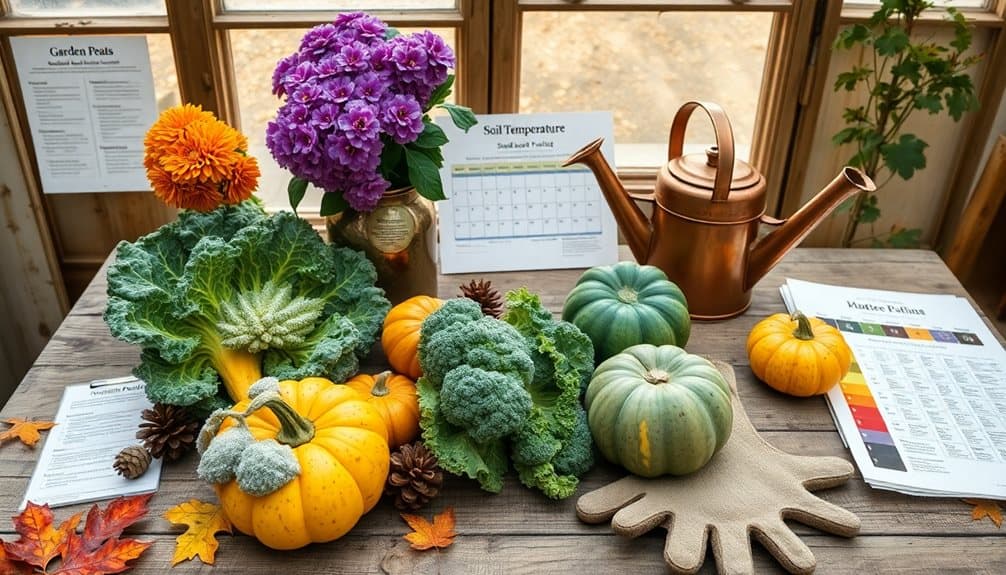
A successful fall and winter garden requires proactive preparation during late summer when soil temperatures remain ideal for root establishment. You’ll need to remove spent summer crops, amend soil pH to 6.0-7.0, and incorporate organic matter to enhance soil tilth before temperatures drop below 65°F (18°C).
Select cold-hardy cultivars suited to your USDA hardiness zone. Plant frost-tolerant brassicas like ‘Winterbor’ kale and ‘January King’ cabbage 6-8 weeks before first frost. Install row covers or cold frames when nighttime temperatures consistently fall below 45°F (7°C) to extend your growing season.
Begin hardening off greenhouse seedlings by gradually exposing them to outdoor conditions over 7-10 days. Apply a 3-inch layer of mulch around established plants using straw or shredded leaves to regulate soil temperature and moisture. Monitor soil moisture levels, maintaining consistent hydration before ground freeze.
For overwintering crops, implement deep mulching techniques using 6-8 inches of organic material. Install wind breaks on the north side of beds, and consider using thermal mass objects like water-filled containers to moderate temperature fluctuations during severe weather events. For optimal root development in winter vegetables, ensure your raised beds provide minimum soil depth of 12-14 inches for proper nutrient retention and growth.
Maximizing Indoor Growing Space
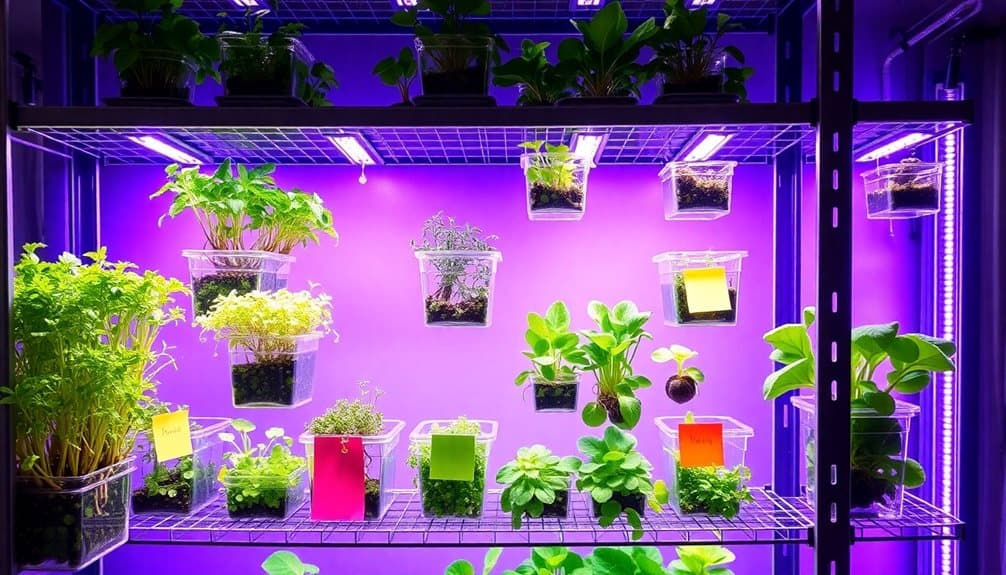
When outdoor growing space becomes limited by winter conditions, indoor cultivation offers year-round growing opportunities. You’ll need to assess your available indoor square footage and vertical space to maximize growing potential. Install adjustable shelving units with LED grow lights positioned 6-12 inches above plant canopies, ensuring 14-16 hours of daily light exposure for ideal photosynthesis.
Enhance your growing area by implementing vertical gardening techniques. Mount hydroponic wall systems or stack self-watering containers to utilize vertical space efficiently. You can cultivate microgreens in shallow trays, positioning them on multiple tiers to increase yield per square foot. For larger plants, use rolling plant stands to rotate specimens for even light exposure and easy maintenance.
Create designated growing zones based on plant requirements. Group specimens with similar humidity and temperature needs together, maintaining proper air circulation with oscillating fans. Install humidity trays beneath containers and monitor ambient conditions using digital hygrometers. For limited windowsill space, select compact varieties and implement succession planting techniques. You’ll maximize productivity by rotating short-term crops like herbs and lettuce every 3-4 weeks. Choose lights that emit full spectrum wavelengths between 380nm and 800nm to support all growth stages from germination to flowering.
Frequently Asked Questions
How Do I Protect My Garden From Local Wildlife Without Using Harmful Chemicals?
You’ll need multiple deterrent methods to protect your garden. Install physical barriers like mesh fencing, row covers, or hardware cloth extending 6-12 inches underground. Deploy motion-activated sprinklers, ultrasonic repellent devices, or reflective materials. Plant aromatic perimeter crops like lavender, mint, or marigolds as natural deterrents. Maintain proper sanitation by removing fallen fruit and securing compost bins with latching lids.
Which Companion Plants Can Help Naturally Deter Common Garden Pests?
You’ll find that marigolds repel nematodes while nasturtiums deter aphids and whiteflies. Plant aromatic herbs like basil near tomatoes to ward off hornworms, or oregano to protect cucumbers from harmful pests. Lavender’s strong scent confuses cabbage moths, while chives discourage Japanese beetles. Position alliums strategically throughout your garden beds – their sulfur compounds naturally repel many destructive insects while attracting beneficial pollinators.
Are There Smartphone Apps That Can Help Track Watering Schedules?
You’ll find several reliable plant-watering apps designed for precise irrigation management. Planta, WaterMe, and Plant Care Reminder offer customizable schedules based on species-specific needs, local climate data, and soil moisture requirements. These apps integrate real-time weather forecasts to adjust watering frequencies, track multiple plants simultaneously, and send push notifications. Some advanced options even sync with smart irrigation systems for automated watering control.
What Should I Do if My Soil Ph Test Shows Extreme Readings?
Like a chemistry experiment gone wrong, extreme soil pH readings need immediate attention. If you’ve got highly acidic soil (below 5.5), apply dolomitic limestone or wood ash to raise pH. For alkaline soil (above 7.5), add elemental sulfur or aluminum sulfate to lower it. Make amendments gradually over several weeks, retesting every 10-14 days. You’ll need to calculate application rates based on your soil volume and current pH level.
Can I Save Seeds From Hybrid Vegetables for Next Year’s Planting?
You won’t get reliable results from saving hybrid (F1) vegetable seeds. Hybrid plants are created from two distinct parent varieties, and their seeds won’t produce plants identical to the parent. The second-generation plants (F2) will exhibit genetic segregation, resulting in unpredictable traits, reduced vigor, and inconsistent harvests. For consistent results, you’ll need to purchase new F1 hybrid seeds annually.

